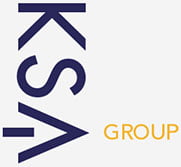What is Company Bankruptcy?
The term “company bankruptcy” is most usually heard in relation to companies in the USA. Under Chapter 7 of the U.S. Bankruptcy Code, the company stops all operations and goes completely out of business. A trustee is appointed to liquidate (sell) the company’s assets, and the money is used to pay off debt. Only individuals in the UK go bankrupt whilst companies go into what is termed terminal insolvency which is either administration or liquidation.
When should you consider company administration?
Administration is a powerful formal insolvency procedure if there is a viable underlying business but the company has severe cashflow issues and pressure from creditors. The principal aim is to rescue the business as a going concern and this may involve the selling of the business.
When should you consider company liquidation?
So, if your company is insolvent and is no longer viable then the correct procedure is either an administration or a creditors voluntary liquidation. The directors decide that the business has no future and cannot pay its creditors. The directors then convene a meeting of the company’s shareholders, who pass a resolution to place the company into liquidation and appoint an Insolvency Practitioner to act as the liquidator.
What is the process of putting a company into liquidation?
- Board Meeting: The directors convene a board meeting to assess the company’s financial position and determine if it is insolvent. If they agree that CVL is the appropriate course of action, they will pass a resolution to initiate the process.
- Appointing an Insolvency Practitioner: The directors must appoint a licensed insolvency practitioner (IP) to act as the liquidator. The IP’s primary responsibility is to oversee the liquidation, realize the company’s assets, and distribute the proceeds to the creditors.
- Shareholders Meeting: Usually just before the creditors’ meeting where the shareholders agree to place the company into liquidation
- Creditors’ Meeting: The IP will convene a creditors’ meeting, typically within 14 days of the board meeting, to inform the creditors about the company’s financial position, the proposed CVL process, and to seek their approval. At this stage the creditors get to see what is termed an estimated Statement of Affairs (SofA). This document sets out what the position of the company is, what it owes it creditors and whether there is likely to be any dividend paid out. Using the deemed consent process there is no need for an actual creditors meeting. Notices go out about the proposed liquidators and if no objections are raised within 14 days, then the liquidation process starts.
Bear in mind that if you do not act promptly then you will find that your creditors will force you into liquidation. This is what is termed compulsory liquidation and it starts when a creditor issues a winding up petition. This is a court based procedure and is generally riskier for directors and is more hassle and stress as the process can take upto a year.
Personal Bankruptcy
If your business is not being conducted via a company, i.e you are a sole trader or a partnership, then you will need to go bankrupt, if there is no prospect of you being able to pay your creditors (owed more than £5000). This option places personal assets, like homes, vehicles, or even personally owned business properties, at risk. Similar to company liquidation, personal bankruptcy involves selling off assets and allocating the proceeds to creditors. Typically, after one year, most remaining unsecured debts are discharged in a bankruptcy case.
Alternatives to Liquidation or Bankruptcy
For individuals, or partners, the alternative is what is called an Individual Voluntary Arrangement. This allows a proportion of the debt to be paid off over a 3-5 year period. The creditors need to agree to this by a 75% majority by value.
For companies the alternatives are administration or a company voluntary arrangement.








